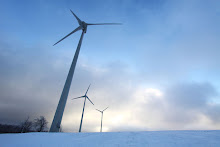Determine the amount of lighting you really need:
**Do a lighting walk-through
*Take a close look at each area to see what lighting needs really are. Ask people how they feel about the lighting
*Consider using a light meter and comparing the results with the lighting level recommendations from the Illuminating Engineering Society.
*Check to see how clean the lamps and fixtures are and do any necessary cleaning before deciding on efficiency changes in the lighting.
*Be sure to take into account whatever contribution daylight is making.
**Consider a walk-through with an expert
**Review your outside lighting needs
*Consider parking areas, signs, entrances, walls and landscaping. You may be able to turn off some of this lighting, or use it fewer hours, or use lower wattage lamps.
**Reduce lighting levels when appropriate
*Assess the use of dimmers
**Remove unnecessary lighting
**Use partial lighting before and after "public hours"
**Reduce hours of lighting operation when appropriate
*Turn off lights when an area is unoccupied
*Install occupancy sensors in general usage areas
*Use daylight to its full advantage
*Use photocells, time clocks or both
*Consider rewiring
*Consider an energy management system
**Install more efficient lighting
*Replace incandescent lamps with higher efficiency lamps
*Consider halogen lamps for "tight beam" applications
*Choose the right style of lamp for recessed or "can" lighting
*Replace T-12 fluorescent lamps and magnetic ballasts with T-8 or T-5 lamps with electronic ballasts
*Install high efficiency ballasts
*Replace present lamps before they burn out
*Retrofit your Exit signs
*Replace outdoor lights with more efficient types of fixtures
Monday, September 19, 2011
Subscribe to:
Comments (Atom)
